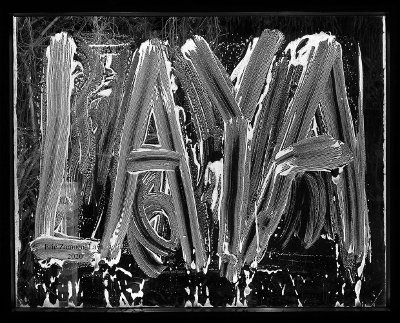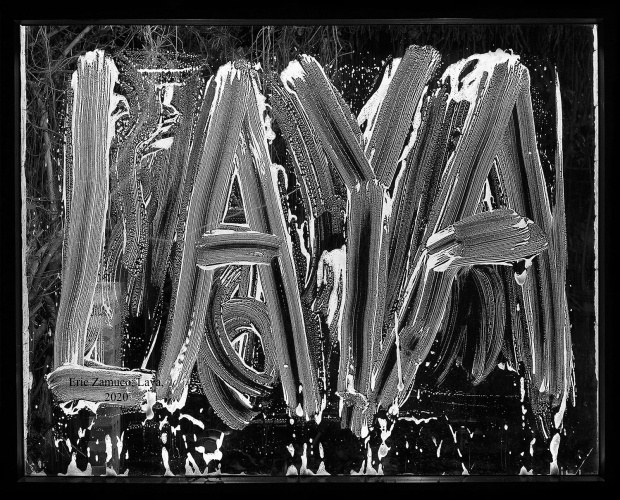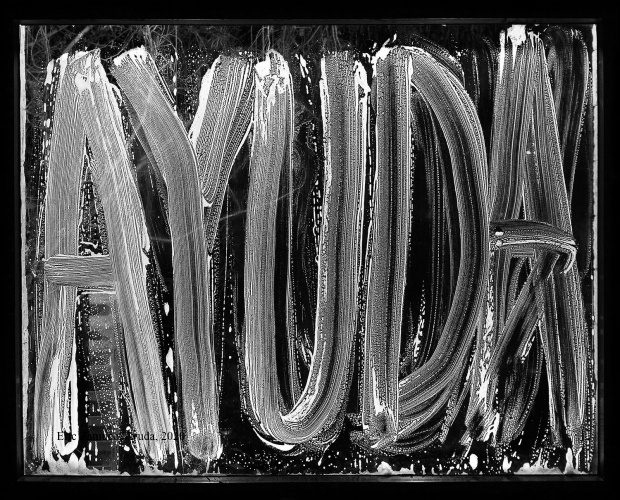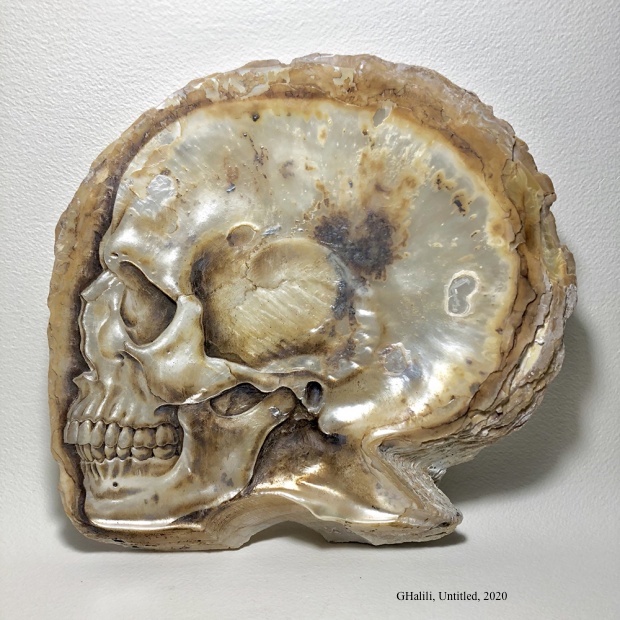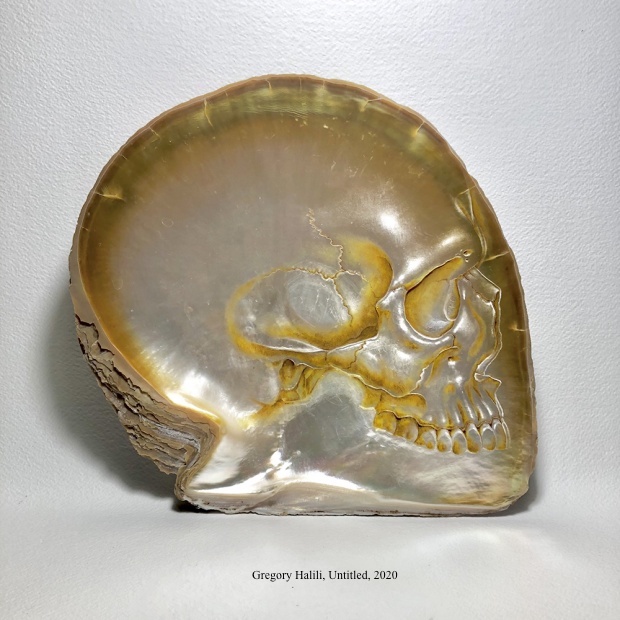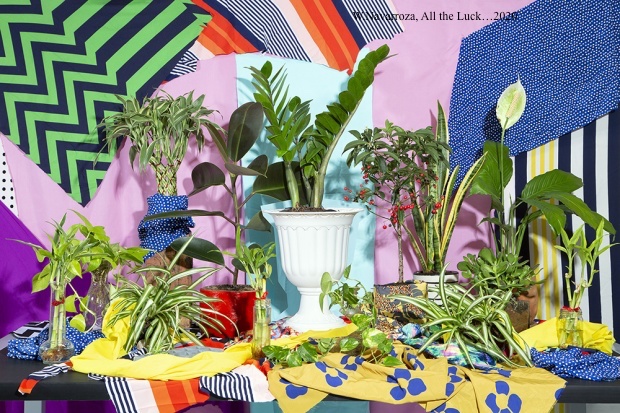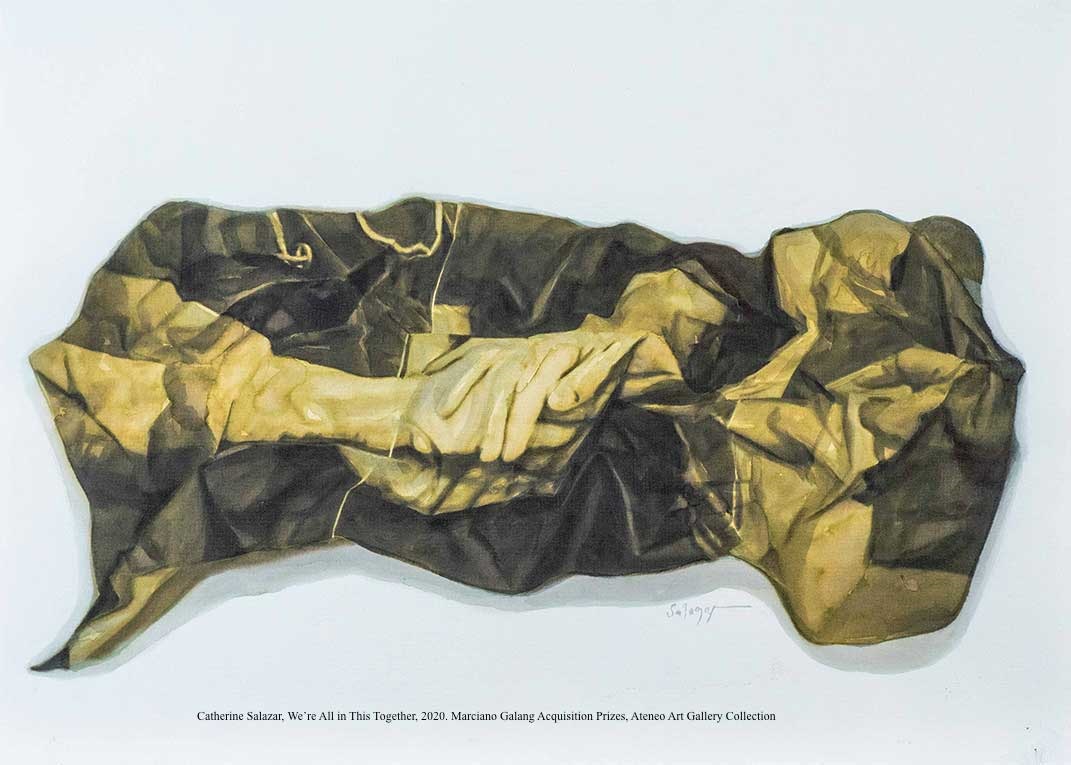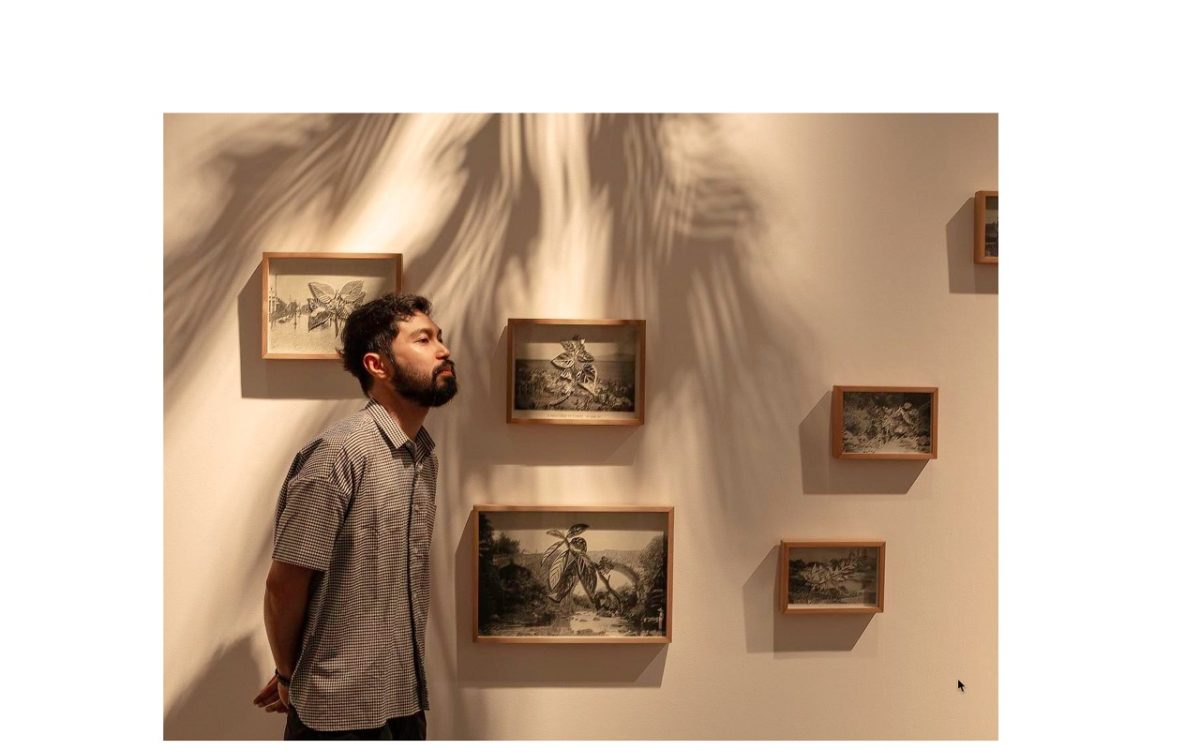Almost three months into the Covid-19 lockdown, with museums, theaters, and other art spaces still closed — the opening of Silverlens Gallery’s first online only exhibit, Anticipating the Day, has bravely tested the new reality of art exhibits under quarantine. With 21 artists, it consists of 60 works, an eclectic mix of oil on canvas, collage, assemblage, video, and photography. To view the exhibit at your own pace, go to Silverlens Gallery’s website.
Some of the highlights of this virtual exhibit:
Eric Zamuco (b.1970) Describing himself as “the sanitizer of our space to keep our family safe,” Zamuco’s work echoes our daily routine of disinfecting and cleaning, to keep ourselves safe from the corona virus.
Anong ginagawa mo? is a single-channel video that shows the action of washing a window with soap. It is mesmerizing to watch at the repetitive action of making soapy circles. Using a duratrans lightbox, six video stills show different soapy strokes. Two stills form the words “Laya” and Ayuda” — a silent call to action. The video is also “a reflection on isolation, ritual, cleansing, and endurance.”
A multimedia artist, Zamuco is a graduate of fine arts, University of the Philippines Diliman, 1991. His awards include the Thirteen Artists Award, 2003, Cultural Center of the Philippines, and the Ateneo Art Awards, 2005
Ryan Villamael (b. 1987) presents 11 works in Vista, a watercolor series started in quarantine where he renders close-ups of imaginary and idealized Philippine landscapes in cut-off paper. He uses paper primarily as his medium. Quite intentional, the exterior landscapes take us beyond our own confined spaces, allowing us to re-imagine the day when we can reclaim the physical landscape once more, without fear.
He is a fine arts graduate major in painting (2009) from the University of the Philippines, Diliman. He received the Ateneo Art Awards in 2015 with three international residency grants in Australia, Singapore, and Liverpool, UK.
Gregory Halili (b.1975) Continuing his work on seashells, he displays Deep End (2020) using a rectangular capiz shell as his canvas, with an ensemble of bleached corals in oil. It is inspired by climate change and the fragility of existence.
Two shell works of a skull, both named Untitled, 2020, a memento mori etched in nature, are “a reminder of the past, present, or future.” A fine arts graduate (1998) of the University of the Arts in Philadelphia, Halili’s works focus on the art of miniatures that capture the cycle of memory, life, and death.
Norberto Roldan (b. 1953) His installations and assemblages address “issues surrounding everyday life, history, and collective memory.” In two assemblages, Historical Distancing 1 and Historical Distancing 2 (2020), Roldan re-appropriates found objects and presents them in an entirely new context. He asks: “how can the distance between today and yesterday be defined by objects?”
Roldan has a fine arts degree in visual communication from the University of Santo Tomas, 1976 and a master’s degree in art studies in 2001 from the University of the Philippines, Diliman.
Wawi Navarroza (b.1979) Her work, All the Luck You Need (XXXX) shows a tableau of good luck plants with a background of cut fabrics in vibrant colors. Done in January 2020, it was meant as an auspicious offering to the new decade unfolding before us, with a wish for health and fortune. In hindsight, we really need all the luck to overcome this pandemic.
Navarroza is a communication arts graduate (2002) from De La Salle University Manila with further photography studies in New York City and Madrid, Spain. She received the Thirteen Artists Award in 2012 from the Cultural Center of the Philippines and the Ateneo Art Awards in 2007.
Dina Gadia (b. 1986) In Tides of the Earth (2020), the certainty of the cyclical influence of the earth and the moon on each other may be our assurance that this pandemic will have its end, one day.
A recipient of the Thirteen Artists Award in 2018 granted by the Cultural Center of the Philippines, Gadia works primarily in collage. She uses images and texts from comic books, illustrations, and advertisements to reimagine new images that form stimulating and coherent narratives.
Essential “Non-Essential”
At best, an online art exhibit only recreates the art-viewing experience within the confines of computer and smartphone screens. But amidst the pandemic, the digital interface provides a safe balance between connection and distance. Using digital technology is one way of viewing and enjoying artworks in the isolated cocoon of one’s home, for now.
The work of imagination must always continue as part of what make us human. This global pandemic, like the bubonic plague in the 14th century, will certainly lead to new creative thinking in our lives.
All photos courtesy of the artist and Silverlens.
